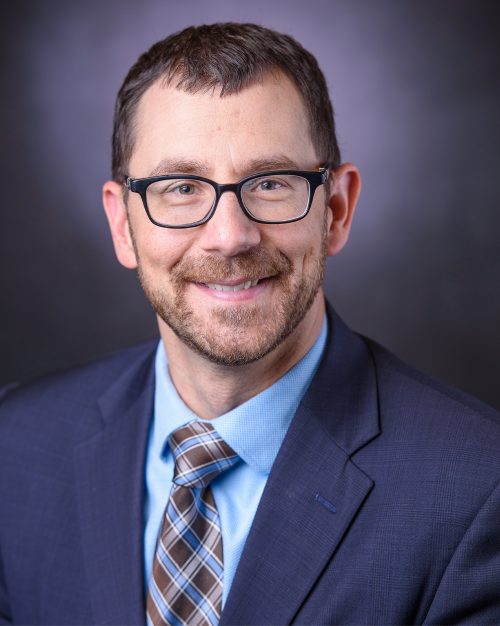Reflections on Economic Mobility Forum: Experts Weigh-In on Challenges and Significance of Financial Inclusion
February 17th, 2023
Ed Sivak, Executive Vice President of Policy and Communication
This week, HOPE (Hope Enterprise Corporation, Hope Credit Union and Hope Policy Institute) hosted Banking on Financial Inclusion. Attended by over 200 advocates, bankers, nonprofit leaders and students, experts from around the country delved deeply into topics of fair lending, closing the racial wealth gap, banking the unbanked and expanding access to capital, particularly for people of color. Governor Michael Barr, Vice Chair of Supervision of the Federal Reserve System, provided keynote remarks and spent additional time in Jackson, Mississippi meeting with HBCU students and touring several sites of both historical Civil Rights significance and the continued work of the movement today. While we will unpack reflections from the forum in this space for the foreseeable future, this post builds on our efforts during the month of February to shine a light on Black history and its ties to the financial empowerment of Black people.
William M. Rodgers, III the Director of the Institute for Economic Equity with the Federal Reserve Bank of St. Louis kicked off the policy forum with a presentation titled “Cases for Economic Equity.” He began his remarks with the historical case for equity and drew from an essay authored by Dr. Martin Luther King, Jr. in The Nation on March 4 of 1966. At the time, Dr. King lamented “Jobs are harder to create than voting rolls” and spotlighted wide gaps between white and Black residents of the country in employment, the quality of jobs attained and self-sufficiency wages. Fast forward nearly 60 years and the size of the gaps today are nearly identical to the gaps named by Dr. King. Such conditions limited access to financial services then and just as they do today.
The gaps come at a great cost – not just to Black Americans – but to all of us. Dr. Rodgers estimated that closing the employment and wage gaps between white and Black households would generate an additional $1.2 billion of economic activity in Little Rock, AR; $3.7 billion in Jackson, MS and nearly $5 billion in Memphis, TN – all places in need of economic growth.[1]
We know wide gaps in financial inclusion remain today. In Mississippi, less than half of Black households are fully banked compared to over 80% of white households.[2] Near similar patterns hold in Louisiana and while overall rates of being fully banked for white and Black households are higher in Alabama, the gap remains over twenty percentage points between the two groups.[3] Likewise, 79% of white households own their own home in Mississippi compared to only 54% of Black households. In Arkansas and Tennessee, the gap is even wider at 28 percentage points.[4]
Following the forum, several attendees toured the M. W. Stringer Grand Lodge. Narrated by Mr. Frank Figgers, a veteran of the Civil Rights Movement, the tour underscored the critical role of the lodge as a hub of organizing, commerce and culture within the Black community. The tour also focused on the many ways in which the lodge advanced Black financial empowerment. Underneath its roof was a Black owned Savings and Loan, insurance companies and a community development corporation to facilitate the building and purchase of homes. When white led banks in the city of Jackson would not serve its Black residents, Black owned financial institutions advanced economic opportunity among Black people.
One set of institutions bucking this trend and following the cooperative finance spirit that existed in the M. W. Stringer Grand Lodge decades ago includes Minority Depository Institutions (MDIs). MDIs, financial institutions owned and led by people of color, locate and lend in Black communities at much higher rates than predominantly white led institutions.[5] Unfortunately, the institutions are often undercapitalized and resourced – limiting the reach of MDIs.
The current state of financial inclusion warrants a strong response on the advocacy front. First, systems must be in place to collect, publish and make accessible data on financial service access. The Home Mortgage Disclosure Act represents a good first step in measuring gaps in lending outcomes for white and Black homeowners. Soon, rules will be published on making similar data available to measure and monitor lending to entrepreneurs by race. Support for the Consumer Financial Protection Bureau and calls for robust reporting should be swift and in service to the countless entrepreneurs who have experienced discrimination when applying for business loans. Second, MDIs with long track records of serving people and communities should be considered, included and meaningfully supported through increased federal and private investment that facilitates growth on the terms of the MDIs. As the data show, no other set of institutions does more to increase financial inclusion among people of color than the institutions owned and led by the people served.
[1] William M. Rodgers, III. Vice President & Director of the Institute for Economic Equity. Calculations from U.S. Census, Bureau of Labor Statistics and “The Multi-Cultural Economy” published by the Selig Center for Economic Growth, Terry College of Business at the University of Georgia.
[2] 2021 FDIC National Survey of Unbanked and Underbanked Households
[3] 2021 FDIC National Survey of Unbanked and Underbanked Households
[4] PolicyMap. Estimated percent of Black or African American households who own a home, between 2017-2021. Estimated percent of white households who own a home, between 2017-2021.
[5] 2019 Minority Depository Institutions, Structure, Performance and Social Impact https://www.fdic.gov/regulations/resources/minority/2019-mdi-study/full.pdf






